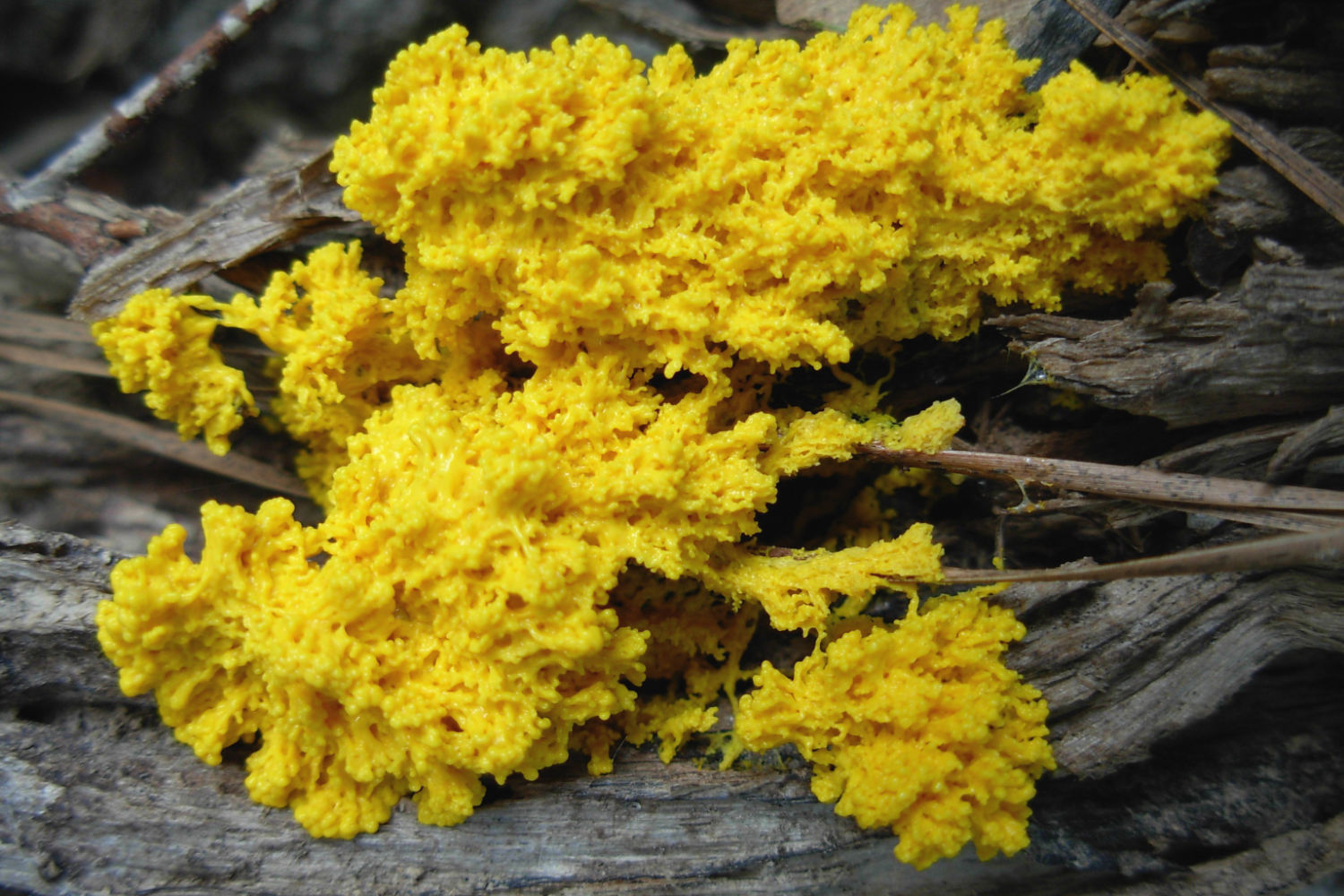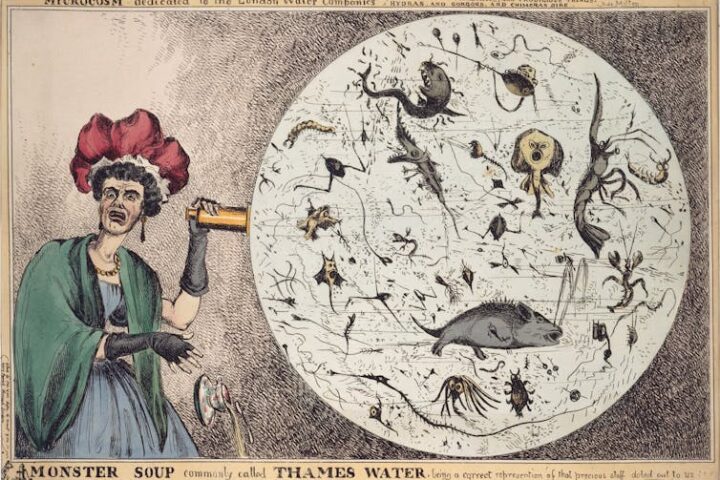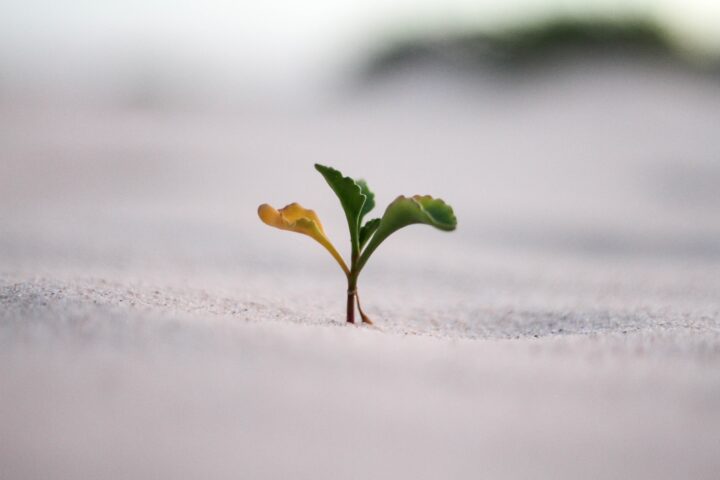Slime mold and philosophy have more relation than meets the naked eye. It is both a humbling and fascinating topic, often relegated to the scope of biology. But the relationship of such a “lowly” organism with its surroundings evokes some philosophical questions.
The treatment of animals in philosophy has two major referents: Aristotle and Descartes. The former institutes a ladder in which lowly beings are poor manifestations of the pure form of God. Saint Augustine follows him, stating that materiality, animals included, is the ontological evil. Descartes, on the other hand, relegates animals to automatons, pure cause and effect, devoid of any agency or liberty.
In that state, it’s logical to develop an ontology that crowns the human being as the giver and constructor of worlds, the pinnacle of creation, and the judge of all life. In that context, thought and intelligence are seen as a gradient that peaks in humans and exponentially degrades downwards. But what does it really mean to think and solve problems? Is the human being the only one that solves problems, while the rest of life is passive in its relation to the environment? Only narrow-minded arguments could support that theory.
Nevertheless, we don’t see insects reading Plato or a conspiracy of mushrooms to overthrow a tyrannical leader. But we can see very well-adapted species living in harmony in complex trophic chains. There must be some form of exchange of information with the environment, and not mere passive reception. Luckily, the philosopher of complexity Edgar Morin saves the day with the conceptual duality of “computing” and “cogito.”
In a clear homage to Descartes, “cogito” refers to the usual way of conceiving thought. As such, it is almost exclusive to higher mammals and flourishes exclusively in humans as philosophy. Computing, meanwhile, or more specifically “living computation” or “self-computation,” is loosely the ability of life to exchange substances with the environment and to choose whether to invite them inside the membranes or not. From this point of view, the resemblance to the usual term applied to computers becomes evident, because computing means solving problems that arise from the inevitability of being in the world—thrown into the world, as Heidegger would say—and maintaining homeostasis while being.
Computing thus enables some capacity of thought in elemental life, making it capable of solving supposedly easy yet complex problems, as seen in recent investigations. One such being is commonly known as “slime mold,” which began to attract the interest of biologists in the 1960s.
Complexity studies, emergence, and slime mold are intertwined. Without room for clarification of such a concept, I will concentrate on showing the amazing and hidden life of this tiny organism.
Slime mold, scientifically known as Physarum polycephalum, is a unicellular protist commonly found in moist, dark forests and similar conditions in domestic constructions. In its macroscopic form, it appears as a yellow blob with green tones, loosely resembling vein-like structures. One of its many curiosities is its ability to aggregate or disaggregate, phasing between macro- and microscopic forms.
Johnson, in his famous book Emergence (2001), relates the puzzlement of scientists who find that the yellow blob disappears and appears at will. Later, it was found that, in response to a lack or abundance of food, the mold can aggregate into a blob that remains unicellular (although with multiple nuclei) despite being macroscopic.
This behavior led, among others, to the discovery of emergent properties in complex systems. In particular, the decision to become an observable being or not was made not by a certain nucleus or another structure, but by the organism as a whole. In Johnson’s words, there was no “pacemaker” nor a leader that made that decision; it happened in mysterious, democratic, and consensual ways.
As I said, decision-making is what makes the mold philosophically interesting, among other things, because it is open to philosophical and psychological fringe situations never thought of before. In this case, the mold manifests an externalized spatial memory, a property that shakes the very core of what is thought to be memory.
The organism displays “basal cognition,” the capacity to learn, memorize, anticipate, and make decisions, found also in other non-neuronal living beings. The importance of this resides in “convergent evolution,” the same resolution to the same problem arrived at by different species in the same environment. The idea of lowly beings helping to understand complex behavior is what is both humbling and fascinating about the mold.
Let’s briefly delve into it. What does it mean to have memory? Memory is usually defined as any “experience-dependent modification of internal structure.” In this definition, we can see that memory is intended to be an internal modification in response to some stimulus.
Nevertheless, the slime mold defies conventions: in its macro-cellular form, the mold secretes an extracellular slime that serves as a means of transportation and a strangely sensory organ. The slime-covered surface, like a paved road, allows the mold to register places where it has been and that, therefore, are devoid of food.
The extracellular slime acts, in fact, as an extension of the activity of the mold, which in this case functions as a proto-subject whose sticky mucus becomes an organ of objectification of the surroundings. A mere piece of rotten wood thus becomes “slimed” and becomes part of the diminutive world and scope of activity of the mold.
This has been proved experimentally. A lab-grown slime in a petri dish accesses the food faster if the agar of the dish is clean. If the agar is covered with the extracellular slime of another Physarum organism, the mold gets to the food ten times slower, as if it were exposed to an unknown language without any Rosetta Stone at hand.
This means that some organisms display a form of external memory in contrast with the internal memory of neuronal beings. The core question here is whether it is legitimate or not to consider the extracellular slime as a response to stimuli and also as a memory.
Clearly not; the extracellular substance predates any impulse. It is, as a last resort, a new form of memory entirely material, devoid of ideality. Or is it?
Let us think of a chair. Not a speck of slime covers it, but it’s also an object. In this case, the wood has been carved, has been thought of as a project in the mind, and later carved into a chair with two means: bare hands and tools. If it has not been covered in mucus, other substances have been poured over it: thought becoming material with hands and tools. The world becomes a human world when thought transforms the environment through the executive role of tools. And mere wood transforms into furniture, stone into buildings, and curiosity into Science and Philosophy.
That human world, a world of objectified activity both ideal and material, has a humble correlation in Physarum’s world. The only difference is that the sphere of the ideal and thought has not been inaugurated yet. Moreover, although it does not exist as Cogito, Nature resorts to biological computing when neuronal material conditions have not been met yet. As if, following some Spinozean dictum, Nature longs to think itself prematurely, even before the emergence of neurons.
The active capacities of the mold can be shown even without delving deep into its physiology, because Physarum is an example of “niche construction.” Not content with making an objectified slime-covered world, the mold actively transforms the environment to make it suitable for an easier life. This effect, thus, affects the species’ evolution. As a beaver constructs massive dams affecting the availability of food and the composition of the colony, the humble slime mucus affects a tiny world comprising rotten wood in some shady forest in North America.
Summing up, the division of capabilities in the Tree of Life is not carved in stone. As we humans behave as beasts, some tiny organisms behave very humanly, objectifying their surroundings with the primitive means at hand. The subsequent applications of slime mold in the resolution of manifold problems—such as traffic movement in cities, treatment of cancerous tumors, and the solution of maze-like puzzles—make it invaluable in lateral thinking for eternal problems, not yet solved with human rationality alone.
References
Johnson, Steven. Emergence: the conected lives of ants, brains, cities and software. Sribner, 2001.
Morin, Edgar. El Método III: El conocimiento del conocimiento. Cátedra, 1999.
Sims, Matthew. Slime Mould and Philosophy. Cambridge University Press, 2024.



